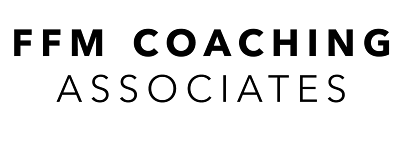Coaching Myths and Misconceptions in Executive Coaching
Executive coaching is surrounded by persistent myths that distort its purpose and potential. This article demystifies common misconceptions using evidence-based insights and clarifies how executive coaching differs fundamentally from therapy, consulting, and other development formats.
What is the most common misconception about executive coaching?
The most common misconception about executive coaching is that it resembles a form of „light therapy.“ In reality, executive coaching is based on systemic, solution-focused methods designed to enhance functional leadership skills—not to address psychological disorders. Unlike therapy, it centers on self-regulation, role clarity, and reflective leadership practice within organizational systems.
Why do many believe coaching is only for crises?
This myth persists because coaching is often sought reactively. However, as the executive coaching literature shows, it is most effective as a preventive and developmental tool. Leaders who engage in coaching proactively enhance their decision architecture, resilience, and long-term role alignment.
Is it true that coaching delivers no measurable results?
No, this assumption is outdated. Research from the evidence-based coaching field proves that executive coaching improves performance, goal attainment, and leadership impact. Pre-/post-intervention data such as 360° feedback and KPI tracking substantiate coaching ROI—especially in strategic leadership environments.
Does a good coach give direct advice?
No—this contradicts the core logic of coaching. Effective coaches do not give answers but create cognitive relief by opening structured reflection spaces. They help clients recalibrate their mental models and activate internal resources through systemic questioning, not prescriptive advice.
Is coaching only relevant for “soft skills”?
No. While communication and empathy are addressed, coaching also targets organizational development, decision-making under complexity, and performance optimization. It supports leaders in managing role complexity, enhancing strategic clarity, and anchoring ethical leadership behaviors.
Should coaching only be used when problems arise?
Absolutely not. Coaching works best as a continual self-reflection mechanism. Integrated into everyday leadership, it strengthens reflection competence and reduces cognitive overload in decision-intensive contexts.
Does coaching differ from therapy or supervision?
Yes. Coaching is goal-oriented and action-driven within a business context, while therapy and supervision serve different purposes. Therapy addresses clinical symptoms; supervision emphasizes case analysis in social systems. Coaching focuses on executive role functionality and systemic effectiveness.
Can coaching work without trust?
No. Coaching cannot function without a trusting relationship. Mutual respect and psychological safety form the basis for meaningful dialogue, authentic self-disclosure, and sustainable transformation.
Why is coaching often confused with esoteric practices?
Because the coaching market lacks standardization, many confuse professional coaching with vague self-help methods. High-quality executive coaching, however, adheres to clear ethical codes (e.g., ICF, DBVC), methodological transparency, and evaluation protocols grounded in evidence.
How can you identify a qualified executive coach?
A qualified coach holds recognized credentials (e.g., ICF, DBVC), has real-world leadership experience, and demonstrates a capacity for analytical, ethical, and systemic support. Transparency about process and goals is key to differentiation.
Is there scientific evidence for the effectiveness of coaching?
Yes. Meta-analyses confirm significant improvements in goal achievement, leadership quality, and role-specific decision-making. Executive coaching is particularly effective when embedded in structured development programs and supported by feedback loops.
What are common coaching myths in executive environments?
Examples include: „Coaching is only for weak performers“, „My coach will tell me what to do“, or „It doesn’t apply to my sector“. These myths reduce coaching to simplistic caricatures, undermining its value in strategic leadership enhancement.
Why do leaders often misunderstand the coaching process?
Because many equate it with mentoring or consulting. Coaching, by contrast, emphasizes self-directed clarity and system-reflective awareness. Misconceptions about format and process can derail progress and dilute ROI.
How does coaching help detect leadership biases?
Through reflective questioning and conceptual reframing, coaching reveals blind spots and decision biases. Tools like role constellation, metaphor mapping, and narrative reframing enable leaders to see patterns otherwise hidden by operational pressure.
What prevents lasting coaching impact in organizations?
Common barriers include poor integration into leadership development, lack of follow-through, and unclear expectations. Sustainable impact depends on institutional anchoring and leadership commitment to cognitive transformation.
Do coaching myths differ by industry?
Yes. Finance often focuses on discretion and KPIs, while creative sectors value identity and relational clarity. Misalignment between coaching approach and sector-specific expectations breeds resistance or disinterest.
